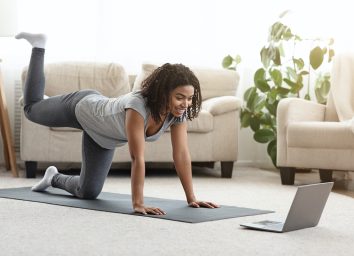Over 60? Do These Exercises to Build Stronger Muscles, Say Experts
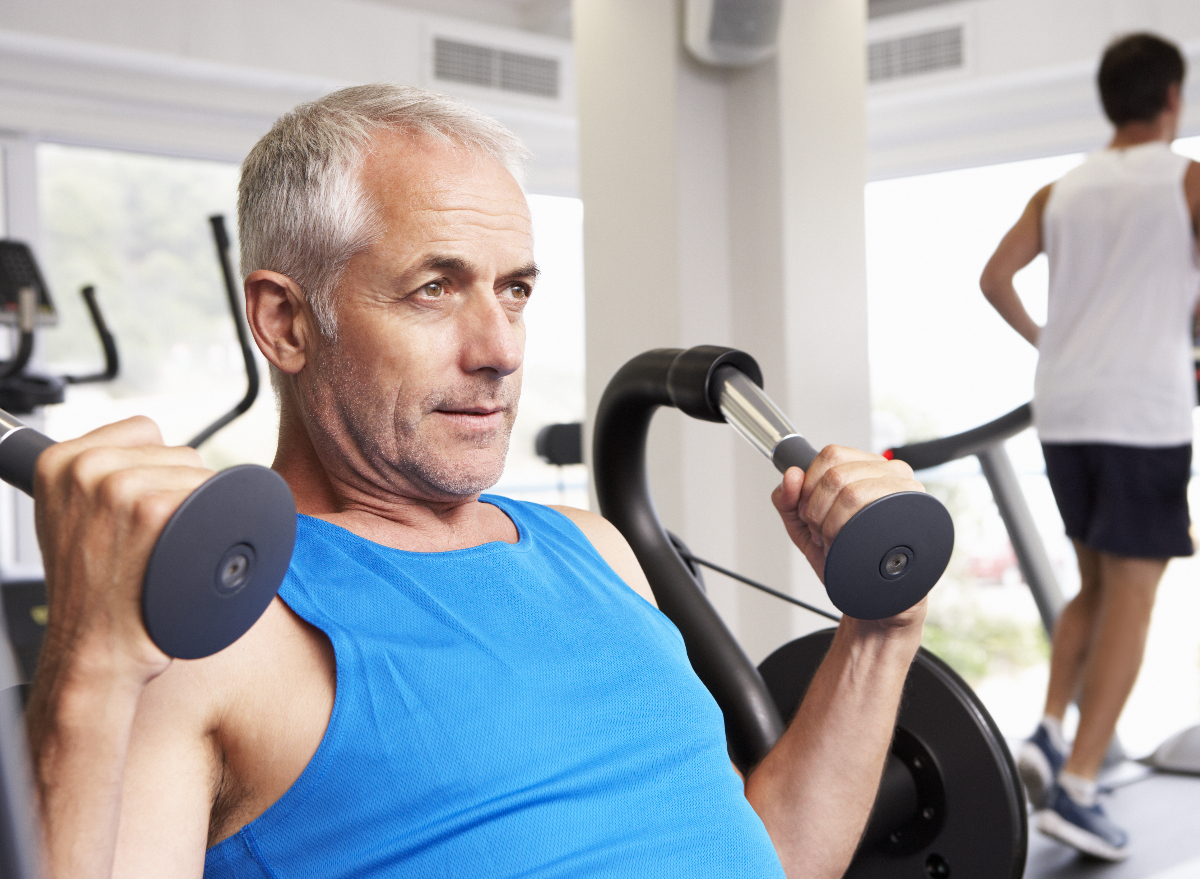
Many older adults make the mistake of exercising less than they did when they were younger. But we should know better. In fact, you could make a strong case for exercising being even more important the older you get.
"When we are in our teens and 20s, building and maintaining muscle mass is as straightforward as it's ever going to be, explains Jack McNamara, M.Sc., C.S.C.S., of TrainFitness. "With the right exercise selection, training intensity, and nutrition, our muscles are primed to effectively increase in efficiency, size, and strength. But most people, especially those who don't have a history of lifting, will begin to lose muscle mass from their 30s onwards."
The medical term for what Bailey is describing is sarcopenia, or the gradual loss of muscle with age. You may not care all that much about cultivating a bodybuilder's physique after 60, but sarcopenia can lead to a steep decline in life quality. Balance suffers, bones and joints become weaker, and, before long, everyday tasks like simply climbing a flight of stairs can feel like a challenge. Just like taxes, sarcopenia is unavoidable—at least to a certain extent.
"Muscle loss is a natural part of the aging process, but that doesn't mean you can't do something about it," says Josh Schlottman, C.S.C.S. For example, one study published in PLOS One found that a six-month resistance exercise training program "markedly reversed" the aging process among participants' muscles.
When we spoke to fitness experts about the best way for older adults to start building more muscle, a few recommendations kept coming up time and time again. To start, don't push yourself too hard. It's important to begin with exercises, weights, and routines that are right for your body and health.
Rachelle Reed, Ph.D., Senior Director of Health Science & Research for Orangetheory Fitness, recommends that older adults set SMART goals for themselves. "SMART stands for specific, measurable, attainable, relevant, and timely," she says. "As you begin a new exercise routine, remember to be kind to yourself and set reasonable goals. Rather than jumping in head-first, start slowly and in a way that feels manageable with your schedule."
But what about specific exercises?
We all know that muscles are built with weightlifting and resistance exercises first and foremost, but many of the trainers and physicians we spoke with say it's a mistake for those over 60 to focus too heavily on one specific muscle group. "I recommend reducing the total volume per muscle group you do per day and combining several muscle groups in one training session," says Dimitar Marinov, M.D., Ph.D. "This way, there is no risk to overtrain a single muscle group and injure yourself. Instead, you will do 1-2 exercises per muscle and train either half or all of your muscles in one workout. You can do that 2-3 times per week which will compensate for the decreased volume per session."
For the record, he's referring to compound exercises, and this approach is advantageous for older individuals for a few reasons. By spreading out the strain you'll reduce risk of injury while simultaneously targeting and building more muscles. Moreover, compound resistance exercises are also great for increasing testosterone levels, which is essential when it comes to building and maintaining more muscle.
Research published in the European Journal of Applied Physiology found that just one month of weight training increased testosterone levels among male participants by an average of 36%. Of course, women can also benefit from an uptick in testosterone when it comes to muscle maintenance and growth. "Hormones that impact our ability to build and maintain muscle, such as testosterone, drop by around 1% per year after 40. Performing compound moves stimulates the body to spike production of these hormones and ameliorate the decline as we age," Jack McNamara continues.
If you're ready to get started, read on to learn more about some of the best compound exercises for more muscle after 60. And for more reasons to exercise, don't miss this Secret Side Effect of Exercising More After 60, Says New Study.
Pull ups
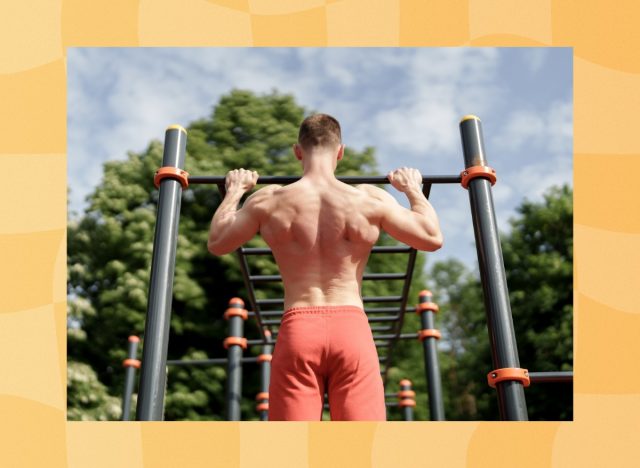
Pull ups are an exercise classic—and for good reason. They target the lats, delts, triceps, back, and core all at once using nothing but a bar to hold on to and your body weight. Even better, you can target different muscle areas depending on your grip. A close grip will focus more on your biceps and outer lats, while a wider grip will work your traps and inner lats more. And for some great exercise advice, don't miss the Secret Side Effects of Lifting Weights for the First Time, Says Science.
Squats
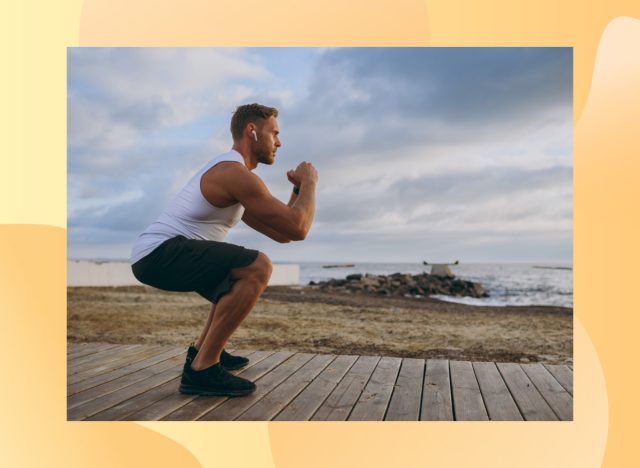
A diligent squatting routine can improve balance, posture, strengthen your core, improve bone density, and even help prevent dementia! Squats don't always come easy, and proper form is notoriously hard for even some experienced exercisers, but the leg muscle building benefits of this exercise makes it an essential part of any workout.
"This exercise is key to building muscle in the legs and lower body. For those over 60 with balance or coordination issues hold onto the back of a chair for balance. Stand with your feet hip width apart with your toes pointed straight ahead. Begin to lower your hips towards the floor by pushing them back behind you like you're going to take a seat. Try to get your legs to go down low enough so they're parallel to the floor. Keep breathing throughout the movement as you return back up to the starting position," Josh Schlottman suggests.
Rowing
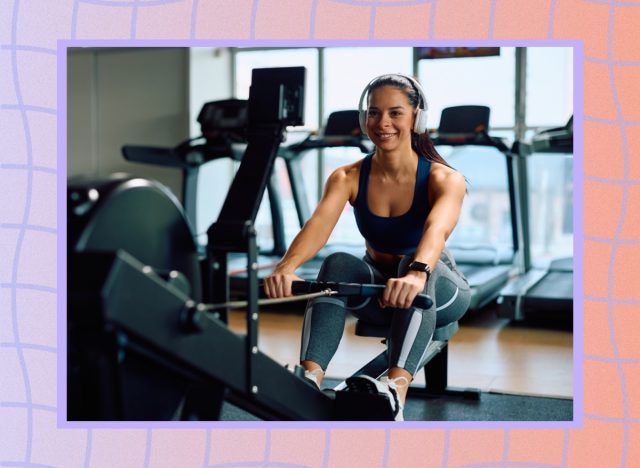
The rowing machine can be pretty intimidating for fitness beginners, but it's ideal for older adults looking to build muscle for a few reasons.
"One of the best exercises for building and maintaining muscle over age 60 is rowing," explains Caley Crawford, NASM-CPT, Director of Education for Row House. "People often associate rowing with cardio, but it is also a great strength-building exercise as it engages over 85% of the body's muscles. Rowing is low-impact and works 85 percent of the body's muscles, which means more bones are loaded and in turn, strengthened. Because rowing is done from a seated position and individuals are strapped into the footholds, there is no risk of falling during the exercise either. This helps offset the effects of bone resorption and conditions like osteoporosis. And unlike a spin bike or elliptical, the erg allows for full range of motion, promoting flexibility and joint health."
One study published in Biomedical Materials and Engineering even reports that rowing can help improve elbow, shoulder, and knee movements.
Incline bench press
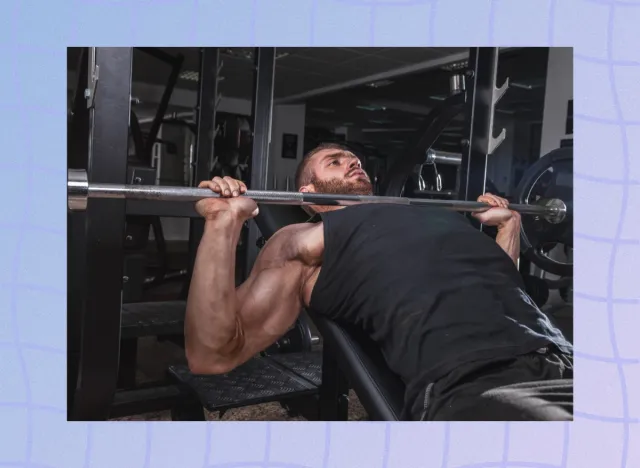
A regular bench press really only works the pectoral muscles, which is why an incline bench press is the superior choice for those over 60. By lifting at an incline of anywhere from 30-45 degrees (this will vary somewhat depending on your height and body type), you'll be working your entire upper chest, front deltoids, and triceps.
But, remember: Don't push yourself too hard with the weight. Start light and gradually build up your max rep over time. Also, your eyes should be directly under the bar when you sit down to begin. And for some more ways to motivate yourself to get to the gym, don't miss The Secret Tricks for Convincing Yourself to Exercise, Say Experts.
